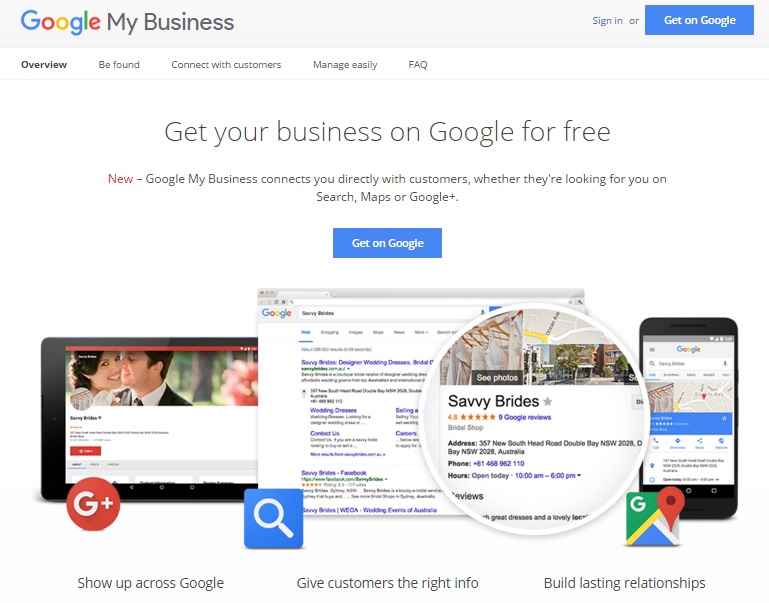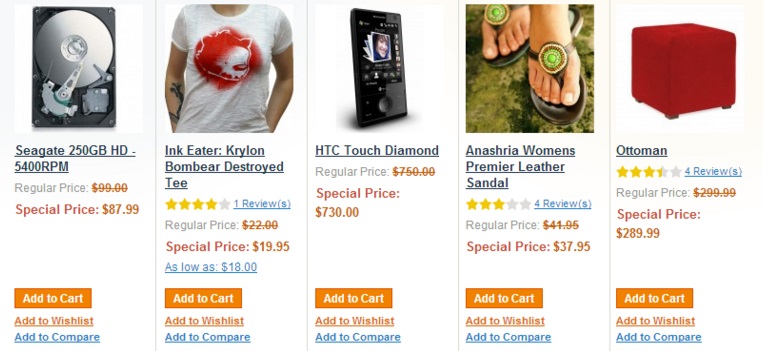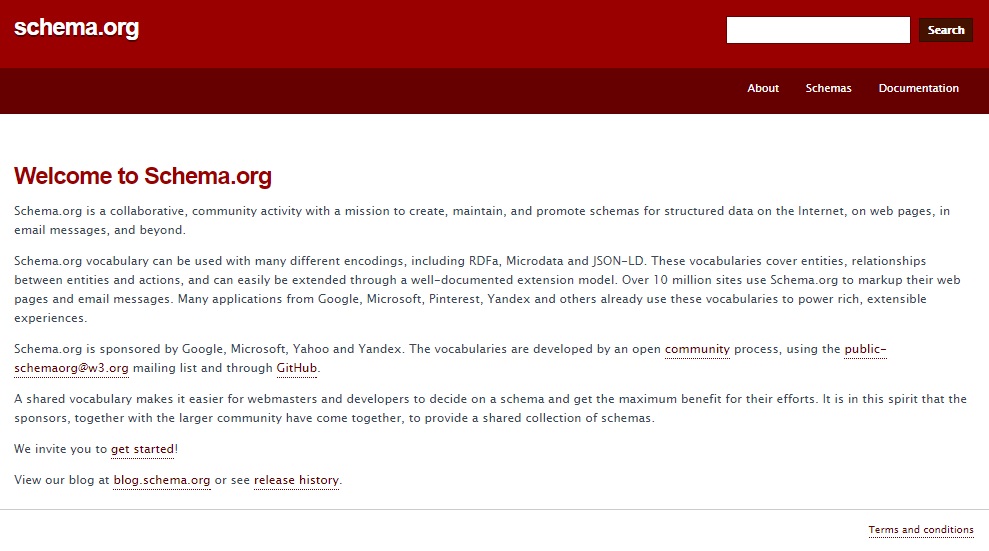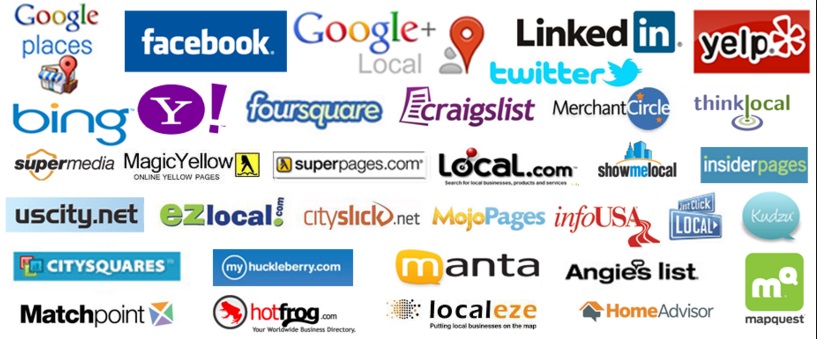DIY SEO: Local SEO Guide (Magento Tips Included)

You’ve heard for many times already about the crucial importance of content in any type of SEO campaign. You’ve heard about the power of keywords that make it possible to significantly improve your website ranking. What you could’ve missed, however, is that in 2014, Google released the update for its local search algorithm, also known as Pigeon, which was aimed to provide a better visibility of local listings in Google’s search results. This event had a massive influence on the entire E-Commerce community: some businesses experienced a certain decrease in their rankings, while others suddenly got to the top positions in the search results list. After location and distance became prioritized by Google’s search engine algorithm, there was a slight shift in search engine marketing that made local content the primary SEO aim for both large and small E-Commerce businesses. That’s when local SEO comes into focus. Note that that the following material can be used as a Magento local SEO guide.

There are numerous qualified SEO companies that have a great deal of experience in optimizing local content of websites from various industries. You can simply address one of those in order to get things done. However, being able to take your local SEO strategy under control and learn how things actually work is a more valuable challenge. We offer you a complete DIY guide on setting up, managing, and improving you local SEO campaign in order to move your business up to higher rankings and conversion rates.
Table of contents
- 1 Prepare Yourself
- 1.1 1. Improve your Google My Business look
- 1.2 2. Optimize your landing page
- 1.3 3. Dive into Schema Markup techniques
- 1.4 4. Build proper local citations
- 1.5 5. Take a closer look at customer reviews
- 1.6 6. Conduct a comprehensive link analysis
- 1.7 7. Analyze your local competitors’ performance as well
- 1.8 8. Choose the most powerful tools for achieving your local SEO goals
Prepare Yourself
First of all, you should determine WHY you might want to conduct a local SEO campaign. If you simply strive for more traffic, there are more general SEO techniques that can help you in a faster and more efficient way. But the ultimate aim of every entrepreneur tends to lie far beyond traffic numbers, particularly – in converting that traffic to actual sales that will bring the desired revenues to the company. Moreover, doing local SEO might be of exceptional interest to brick-and-mortar companies that have a special value of customers available on the spot and would like to improve their positions in the online niche. A less obvious reason is that it is users, not search engines, who are your ultimate targets, so you should make them feel as if you were the best possible option in the entire universe of products and services.
Thus, to better understand your goals, you will need to perform a pre-analysis of your current performance on the market and evaluate your pros and cons. Specifically, pay attention to the following issues:
-
Check out your landing page and its primary elements and see which of them might be in need for optimization;
-
Evaluate your current rankings and determine whether you have competitors in the above positions. If yes, take a closer look at their websites and see what exactly makes them better than you;
-
Based on the two previous steps, set up a thorough plan of action in order to know how, in what time, and with what expanses you are going to achieve your goals;
-
Consider the possibility of unfortunate outcomes as a result of you local SEO campaign. It is likely that some strategies simply won’t work, or they will but not the way you wanted. For these cases you should always have a backup plan that will allow you to come several steps back and try something new.
Finally, you will save a lot of time and effort if you consider using that will put more confidence in each step you make.
After you’re done, you can start building your local SEO campaign from scratch.
1. Improve your look

Google My Business is a starting point for people concerned with localizing their business. Your personal account should contain exhaustive and accurate business-related information, including your company’s NAP (name-address-phone number), working hours, and images. This becomes even more important after Google+ results have stopped to be shown in the Google search results list. However, it does not mean that you have to put down your Google+ page; on the contrary, it will become an additional, as well as quite reliable, testimony of your company’s existence. Now let’s get to details:
-
Make sure you don’t have any duplicates. It is important to check whether there are no similar company names and website addresses on the web to be completely safe about your future local SEO results. You can do it both manually and by using a handy tool . You can also go through the same procedure on Google+. In case if duplicates are found, feel free to write Google administration with the request to delete them.
-
Verify your Google My Business page. If your page is verified, it usually has a check mark with a corresponding stamp sign next to your company’s name shown in your business dashboard. If you have no such thing displayed, you can click on this area and choose the most suitable verification method. It can be usually done either through an automated Google call to your company’s phone number or through a postcard delivery to your physical address (note that the latter option takes around two weeks to be completed). As a result, you get a confirmation code which you will then need to put to the verification field in your profile.
-
Register a legitimate domain-based e-mail address. This step is needed in order to make your company look more authoritative and reliable in your customers’ opinion. Don’t forget to add this new e-mail address to your Google My Business profile.
-
Be consistent with your company’s name. Particularly, make sure that your real-world business name corresponds to that in your online business profile (in both case and spelling). Even a slight divergence can lead to crucial failure in your future rankings. Furthermore, adding any descriptors and tricky keywords is not recommended either, as Google restricted such possibility back in 2014.
-
Check the correctness of your company’s physical address. This is one of the most important things to consider. Apart from including an actual address, you can take care about adding an appropriate ZIP Code and mailbox address, but the latter should be written in the second address line not to confuse the output information when it gets to be shown on the web.
-
Check the correctness of your local phone number. It should be displayed in the local format with an additional region-specific code but without any toll free numbers (i.e. 800).
-
Make sure your website URL points to its main page. However, if you have several offices in various locations, you should create specific landing pages and connect them with corresponding individual business pages.
-
Include the most appropriate categories to describe your business. It is important to remember that categories should describe not what you sell or offer but what you in fact are. Otherwise you take the risk of losing your rankings. So, instead of putting “cheap clothes” you should put “Budget Retail Store”. You can put as many categories as you want, but stick to the idea of being relevant. Moreover, the first category in the list should be the one that describes your business most accurately. If you doubt about which category to choose, take or service as a help.
-
Include up-to-date working hour information. Add your business hours to the profile and don’t forget to regularly change them in case you stick to a seasonal schedule.
-
Briefly introduce your business. Google My Business page also requires adding an introduction which would briefly describe your business. It should not exceed a 300 word limit and be as unique as possible. Using keywords is a must, but only use them where necessary. In addition, make sure you use hyperlinks pointing to key sections of your website in order to let visitors an easy access to the most relevant information about yourself. These links won’t add up to your PageRank but will certainly attract more visitors to your website.
-
Make your Google My Business profile 100% complete. Although it might seem too much, in fact it is not. Every field you fill in is a vital bonus towards an eventual success.
-
Add appropriate images to your profile. Images are needed so you could be easily recognized by users and customers searching for your website. Google My Business has the appropriate section called Identity Photos that allows you to upload images related to your company. Note that you will have to follow certain consistency in uploading the photographs: the first image will be you profile photograph, the second one – your official logo, and the third one – the cover photograph. As a result, your logo will be displayed in the search result list next to the overall information about your company; as for the cover image, it should be of high resolution to be available for display in full-size mode. Don’t forget to check whether the right image is displayed in search engine results.
-
Make use of one of the services. This step is quite optional but is recommended for those who have a spare budget to spend on their local SEO campaign. Basically, you can hire a certified photographer to shoot a panoramic view of the inner/outer space of your business location. For this, go to your Google My Business profile and click on “Add Virtual Tour” button; you will then be redirected to a simple procedure of finding a suitable candidate for a shot. The price for the service will depend on the type and size of your business.
2. Optimize your landing page

In fact, there must be no such thing as on-page optimization, as you’re required to possess a comprehensive customer-driven website from the very start of your business. However, not everyone can be 100% sure about their aims at such an early stage. So to keep up with the constantly changing technological world, you should be ready to be able to modify your company according to the current market conditions. This also concerns local SEO niche.
It was by Moz researchers that landing page signals are the most influential in terms of local SEO rankings. So let’s look at particular ways of improving those signals.
-
& . These two services are the basis for your search engine optimization that contains all the related tools as well as useful tips and recommendations on how to improve your website’s rankings. Webmaster Tools service allows you to monitor website indexing but also all potential problems related to this process, including penalties and search crawler errors. You can also use its modified keyword research tool to search for the most valuable keywords for your textual content. Google Analytics includes everything you need to do to keep track of your performance. To start with, you need to include a www and non-www versions of your website to the Webmaster Tools profile – this will help you to automatically verify your website in Google Analytics. Prior to that, make sure your website is generally indexed by Google’s search engine.
-
Conduct an additional keyword analysis with the help of Google Keyword Planner which is a definitive element of the Google AdWords platform.
-
Make a detailed layout of your landing page. This step is required before you even start to implement your local SEO strategy. You should figure out the potential audience you want to target at and define major factors to approach it.
Q1: do you want to attract your audience to one specific location of your company or to several ones?
Q2: do you have one universal page for introducing your services or several separate ones?
Q3: do you target at various locations by using the same keywords or different ones?
A: If you your business is located in one particular location, it is more reasonable to create a universal landing page containing all the related content in one place including the list of the company’s services that is clickable for providing further information on each of them. If you have several business locations, create separate unique landing pages putting emphasis on peculiarities of each one. Pay more attention to your titles, as they are primary indicators of your on-page content. You can further create a specific Locations page from which users will manage to easily reach the one that corresponds to their own location. Individual location pages should contain city names in respective URLs as well as maps graphically showing users how to get to your office. Moreover, if you have one-location business but plan to target the people from bordering regions as well, you will need to select a specific range of keywords for your landing page.
-
Mind your own NAP. Again, being consistent in introducing your company’s name, address, and phone number is important in local SEO. So make sure your on-page data is similar to those in your Google My Business profile.
-
Arrange your title tags properly. Proper title tags as well as meta descriptions are likely to increase your chances to be more visible to your target audience. The task is to organize them in a proper way. Your title tags should only include the name of your company, its primary location and major keywords. Meta description can be regarded as a complete but brief statement about your company and its activity, but it also should contain business-related keywords and the primary location. To easily monitor your meta tags and descriptions, you can use as an addon to your browser; also, check out a specialized for WordPress to make changes in your meta content even more easily.
-
Improve your header tags. Your landing page can have headers that are more important than others, so you might want them to be more noticeable to users respectively. Assign proper header tags to each of your headers and then check whether the resulting hierarchy corresponds to your expectations. Thus, your primary info (such as location and keywords) will have H1 header type, while all additional sections – H2 or even H3 types. This will significantly emphasize your website’s location to search engines.
-
Work on the unique and catchy content for your landing page. The basic requirement here is not to exaggerate with keywords – putting them all over the place will make it look less relevant and even annoying. We offer you to concentrate more on using less keywords but providing each of them with the company related content so that users could be as informed and motivated so as to order your company’s services. So be brief (use not more than 500 words for the whole text), informative, attractive, and encouraging (work on some call-to-action phrases). Having a location-specific blog is a plus, as there you can naturally promote your company’s events and present corresponding news or educational articles. To get even closer to your target audience, it is recommended to add some location-specific elements to your content, like, for instance, a background containing a panoramic view of the city center or testimonials from local customers.
-
Include your working hours. Again. Because you focus on people from a specific location, adding business hours to your landing page is a must so that your customers knew when to visit you. By the way, Google has proved in their that around 54% of mobile device users tend to perform local search specifically for finding business hours of a particular business.
-
Add some positive customer reviews. Testimonials are the best-working triggers of reliability for your target audience as they let people believe in the good quality of your products and services. Because reviews have such a powerful impact on users’ behavior, it is really important to provide your landing page with a positive feedback from your previous customers. Note, however, that it is crucial to provide real reviews written by real people who really used to deal with your company. To make them look more trustworthy, include social network links directing to those people’s profiles. Moreover, try choosing reviews that contain factual information, such as time, numbers, and prices, to drive more interest of the users.
-
Include some staff information. For some businesses it might be crucial to provide real-life stories or biographies of the major representatives in the company, especially in cases where their proficiency level is a key factor that triggers trust to the quality of its services. The same can be applied to the products which can become a part of a dramatic or entertaining story.
-
Imbed a FAQ subsection. This will make it easier for users to better understand the peculiarities of your work and reduce potential confusion and misunderstanding during the actual business-customer interaction.
-
Boost the efficiency of your images. Although it is widely considered important to provide high-resolution images, this won’t work if you want your website to load faster and look nicer. To start with, all images on your landing page should contain alt text tags to be properly seen by search engines. For this reason, you should not put any textual content within image format – it simply won’t be crawled by search engine bots. As for the size, it should not exceed 1 mb to provide an efficient page load speed. You can edit your images right through content management system or any other appropriate editor; we also recommend using image compressing tools (such as ) that can minimize the size of an image without affecting its resolution.
-
Adjust your website for mobile devices. Simply speaking, you need to make your website mobile-friendly, as this feature is considered one of the main factors influencing the priority of displaying mobile search results. In addition, mobile is becoming more and more prioritized in the E-Commerce niche, which makes it a viable local SEO strategy. The main feature of mobile friendliness lies in providing a smaller version of a website that could be properly shown on small-size screens. However, you don’t need to create a separate website in order to make things work, as there is such thing as responsive design. Responsive design allows for an automatic resize of your website each time a mobile device is detected on the client’s side. This is the fastest and easiest way to make your website (or at least its landing page) mobile-friendly.
-
Test and improve your website speed. None of the previous steps is important if you don’t consider the speed of your website. Making users wait will eventually dive them away, so doing some loading speed tests is important. Try using specialized speed testing services like that will show you how long it takes to open a given page of your website. If the overall time is more than 3 seconds, you will surely need to lessen the amount of your on-page content. Usually, the problem may lie in having too much or too heavy images. Sometimes, however, the issue is with hosting quality. If the latter is the case, change a hosting provider.
Magento Local SEO Tip
For Magento, you can utilize the Landing Pages extension by Amasty to optimize your landing pages.
3. Dive into Markup techniques

There is another important factor influencing search results rankings, and it is one that has an exceptional role in local SEO. We’re talking about Schema Markup which is basically a way to structure meta data on a web page. It is based on schemas proposed by schema.org initiative organized by the major search engines (Google, Bing, and Yahoo) in 2011. By using Schema Markup you can specify what particular information about your company must be shown in the search results list and how it should look. The important thing about the feature is that you can mark up your website’s content with the help of various semantic web standards, such as RDFa, Microdata, URI, and JSON-LD. Now let’s look at how to use Schema Markup for your local SEO strategy.
How to mark up your local business
It is essential to know that marking up on-page content is done primarily for search engines to provide a better visibility of data in the search results list. So, in case with local search engine optimization, you will need to mark up location-specific and contact info. To make it look right, make sure you enclosed your text in div tags. You will also need to utilize business-specific type of syntax, which means that you need to look through schema.org’s available local business categories to find the one that most accurately describes your company. For instance, if you own a restaurant, you should first go to Schemas, then choose the appropriate category (in our case, Organization), then scroll down to More specific Types and choose Local Business, then scroll down again and choose FoodEstablishment, and finally make another scroll-down which will lead you straight to the Restaurant category. From there on, you will see a detailed table of properties that must be used for doing the right markup of your local information.
One way to present your data with schema markup can be as follows:
|
1 2 3 4 5 6 7 8 9 10 11 |
<div itemscope itemtype=”http://schema.org/Restaurant”> <span itemprop=”name”>Tasty Snack</span> <div itemprop=”address” itemscope itemtype=”http://schema.org/PostalAddress”> <span itemprop=”streetAddress”>16 Main Street</span> <span itemprop=”addressLocality”>Los Angeles</span>, <span itemprop=”addressRegion”>CA</span> <span itemprop=”postalCode”>93000</span> </div> Phone: <span itemprop=”telephone”>123-456-7890</span> <a href=”http://googlemapsurl.com” itemprop=”maps”>Get Directions</a> </div> |
It is not crucial to be as specific with defining a category as we offered here, but it will certainly be a plus when it comes to better rankings.
In addition, you can include some other properties to specify your local presence:
-
Company’s logo identification can be done with the help of
|
1 |
<img itemprop=”logo” src=”http://www.tastysnack.com/images/logo.png” /> |
-
Website integration with its corresponding Google+ profile will look like
|
1 |
<link itemprop=”sameAs” href=”https://plus.google.com/+TastySnack”> |
-
Using geographic coordinates to specify your location is achieved through
|
1 2 3 4 |
<span itemprop=”geo” itemscope itemtype=”http://schema.org/GeoCoordinates”> <meta itemprop=”latitude” content=”12.3456789″ /> <meta itemprop=”longitude” content=”-12.3456789″ /> </span> |
How to mark up your customer reviews
This is not a must-have option, but you can use it to add up to your search result reliability. Using schema markups for on-site testimonials will allow search engines to provide your listing with an additional line. It can contain the average review-based rating (either in stars or in numbers) and the total amount of votes left on your website. The example of a proper review markup will look as follows:
|
1 2 3 4 5 6 7 8 9 10 11 12 13 14 15 16 17 18 19 20 21 22 |
<div itemscope itemtype="http://schema.org/Review"> <p> <strong><span itemprop="itemReviewed">Tasty Hamburger</span> Customer Reviews:</strong> </p> </div> <br /> <br /> <div itemprop="aggregateRating" itemscope itemtype="http://schema.org/AggregateRating"> <img src="/graphics/stars-4p5.png" width="106" height="20"> <br /> Rated <span itemprop="ratingValue">4.5</span>/5 based on <span itemprop="reviewCount">11</span> customer reviews </div> |
Here, we have a total of 11 reviews that comprise the 4.5/5 rating value.
You should note, however, that this kind of review markup does not provide any evidence for having such a nice rating. As a result, many website owners use this vulnerability to fake their own reviews so that their ratings looked higher than they really are. Google is aware of this tendency, but for now it only can manually detect and penalize websites involved in spammy markup. It is highly probable though that the problem will be eventually solved by the integration of Google+ reviews.
How to mark up your nearest events
This is another optional opportunity for your website to get to the top ranking positions. By adding a short list of upcoming events at your business, you can significantly enlarge your physical presence in the search results list and increase chances to be clicked on by the users. Regardless of what your company does, there is always a time and place to organize special meetings, conferences, parties, concerts, or workshops. All of them count as events and can be therefore marked up with Schema Markup. You can as well specify your event through schema.org website which will help you out with structuring your code.
Now, let’s assume you would like to organize a music festival. You will need to write the following code:
|
1 2 3 4 5 6 7 8 9 10 11 12 13 14 15 16 |
<div itemscope="" itemtype="http://schema.org/MusicEvent"> <a itemprop=”url” href=”www.musicfestivalexample.com”><span itemprop=”name”>Mega Music Festival<span></a> <div itemprop=”description”>The Festival You Will Never Forget </div> <meta itemprop=”startDate” content=”2015-07-18T14:00″> Starts: Friday, 07/08/15 at 2:00 p.m. <meta itemprop=”endDate” content=”2015-07-20T20:00″><br>Ends: Sunday, 07/10/15 8:00 p.m. <div itemprop="location" itemscope="" itemtype="http://schema.org/MusicVenue"> <meta itemprop="name" content="Central Park"/> <link itemprop="sameAs" href="http://en.wikipedia.org/wiki/Central_Park"/> <meta itemprop="address" content="House# Street Name, City, Region, Country"/> </div> |
Magento Local SEO Tip
Use the following Magento extensions:
4. Build proper local citations

Citations building cannot be considered a fundamental part of local SEO strategy but has enough prospects to improve your performance in the search results. Citations are basically another opportunity to prove to Google and other search engines that your website is a reliable source that has the right to be shown to users in the in first place. Therefore, creating your own citation page should be done manually and contain only the most relevant citations. Although it might take some time, it is totally worth it.
Manual citation building should be performed mainly because it contributes to a better monitoring and allows you to make changes at any particular moment. You can use we’ve included at the beginning of this guide to keep track of your citations as well as the entire local SEO strategy. As an alternative, you can still utilize automatic services that will do the work for you but for a certain fee. Now let’s get to the actual steps you will need to make for building proper citations.
1. Conduct a preliminary analysis of your citation profile. If you have already integrated your business information with some social aggregators, you will need to make sure that all the on-site, Google+, and Google My Business changes have been submitted to their database correctly. Particularly, you might want to check the correctness of your NAP and location, and ensure there are no duplicates of your company on the web. To perform an easy and fast citation analysis you can utilize one of the following SEO tools:
-
(free 30-day trial);
-
;
-
;
-
.
Each of these services are perfect for giving you the right vision of which citations drive more profit to competitors from your niche and which not. Based on the audit results, you can make up your own top 25 citation list and include it to the SEO spreadsheet until needed.
2. Define citation types you’d want to concentrate on. As you head on to local search engine optimization, your citation priority should be concentrated on three citation types:
- The most generally popular directories, including Facebook, Twitter, Youtube, etc.;
- Top business-related directories (will depend on your particular niche). You can find them by searching specific keywords in relation to certain locations;
- Local business-related directories which refer to your current city.
3. Start with building primary citations that will guarantee positive results. Including them is highly important as they all come from high-ranked authoritative websites. In order to get citations verified faster, we advise using reliable e-mail addresses, such as info@yourwebsite.com. Now, here are the most powerful directories to use:
- (Domain Authority: 97, nofollow urls)
Being one of the major search engines, Bing provides an intense backup for your company’s rankings. So Bing Places is a perfect place to start. Consider the necessity to create a Microsoft account to be able to proceed with further registration in the system. The following step will be to log in via your Microsoft profile and find out whether your company is already listed in Bing Places. If yes, then you’ll need to verify your profile; if not, complete a short registration procedure and then still ask for verification. While registering, keep attentive to the input data, including company’s NAP, business hours, social network URLs, images, etc. Finally, verification will be submitted to you via phone or mail delivery. Note that the actual listing of your company’s profile will take around 72 hours to get done.
-
(Domain Authority: 94, nofolow urls)
Yelp is a highly reliable service which allows you to improve your presence on the web. It is also popular among customers because it helps to find, analyze, and compare alike businesses in order to choose the most appropriate option. It is crucial then to provide a complete business profile with up-to-date information. The procedure is quite the same though. First look for your business in the system and claim for it if you manage to find it. Then proceed to the verification process or, if you don’t have an account, create and optimize one while putting more emphasis on the images. It should be noted that Yelp is considered to be an ideal base for service-based companies, especially restaurant chains, which is why images play an exceptional role in the system. However, don’t try to get customers leave their reviews here on purpose – being modest is the #1 rule on Yelp.
Yelp verification is usually done via phone, and its listing period does not usually exceed 72 hours.
-
(Domain Authority: 100, nofollow URLs)
Just on seeing how authoritative the social network is, we can imagine the prospects it can give us as a potential citation. Start with creating the company’s official page by going to Create Page > Local Business or Place or Company, Organization, or Institution and moving on through the following steps. Be attentive to choosing relevant categories for your type of business and provide your company’s profile with proper NAP to keep your data consistent. Image quality is another issue to consider. After your page is ready, you can choose the option to confirm your business is a real establishment – this is not similar to a real verification process but it pretty much adds up to your credibility and takes seconds to complete.
-
(Domain Authority: 100, nofollow URLs)
YouTube is a perfect citation not only because of its high rankings but because its interface is perfectly adjusted for users to include all the necessary information about themselves in the About section of their channels. For you it’s a good opportunity to present your business as well. However, you should take into account the specifics of the website, so if YouTube is a video-streaming service, you will need to provide a video (or videos) of your own in order to keep the ball rolling. Start with creating an appealing video that would perfectly demonstrate your company and its products or services. Then create a new YouTube channel and name it after your company’s name. Include your company’s NAP, location, website URL and short description (with relevant keywords) in the About section. Then upload your video and include the same information in its description as well. Verification of the channel is done automatically on having uploaded the first video. As a final step, try using geotags for specifying your location – remember that YouTube is a part of Google.
-
(Domain Authority: 89, nofollow URLs)
YP is a nice bonus to your top citations list which is quite easy to use. There is a high chance that your website listing is already there, you will just need to find it through the search field and include the necessary improvements. Verification process is usually done via phone call, after which you’ll have to wait for around 72 hours to get officially listed as a business.
-
The pillars of social aggregation: , , ,
These services are the most convenient solutions to deal with on your way to achieving your local SEO strategy. They will significantly improve your citations listings and select the most valuable ones in terms of your company’s needs. However, you can play smarter and get listed through them via Moz Local which we’ve mentioned before. The latter company will only require an 84 yearly fee and 4 to 8 weeks waiting for their services and will significantly save your time and efforts you could spend on reaching out to those guys on your own.
-
(Domain Authority: 100, nofollow URLs)
Although Yahoo! is a worthy candidate for local SEO citation building, it is quite fastidious when it comes to approving companies’ listings. Thus, to get listed you will probably have to pay for using their Yahoo! LocalWorks service as well. Nevertheless, there is no harm in trying if you can afford that.
The whole procedure is similar to those on previous websites. First you search for your business on Aabaco Small Business, then claim for your relation to the company and go through the verification process. If your company is not found, register a new profile by clicking on Add New Business. By the way, a Yahoo! ID is required for dealing with any of its services. After you’re done with verification via phone, you will only be left with 60+ days waiting to get approved, which is quite long but bearable as long as you have your other listings approved.
-
(Domain Authority: 100, nofollow URLs)
This is an exceptionally important citation source, and you won’t regret having it in your listings. Creating a business account has never been as easy: simply go to and proceed through the registration process. Remember to mention only reliable e-mails containing your domain name. Linkedin allows for a variety of customization features which include the opportunity of adding your company’s official logo and . Moreover, verification takes only several clicks: you will need only to accept the service’s requirements and submit the possibility of posting. Your citation will be ready immediately.
-
(Domain Authority: 89, nofollow URLs)
Angie’s List is a valuable service but to get the most of it you will have to pay. Nevertheless, there is a possibility of creating a citation that will contain some basic information about your company. You can start from where you’ll be asked to search for your business in their system. When found, you can then verify it with the necessary info, submit it through e-mail, and finally get it listed in several days.
-
(Domain Authority: 95, nofollow/follow URLs)
This is purely business-related website, so you won’t regret having built your citation here. Even if you’re not accredited by the company, you can still create a free listing without having to pay for it. However, being accredited is pretty much profitable, as your citation’s link will automatically shift from nofollow to follow one, which is totally worth it. Despite this procedure looks almost like buying a follow link, it is completely accepted by Google mainly because BBB has such high rankings.
Verification procedure on the website is straight-forward and convenient. Your business profile can be approved either via e-mail, phone, or simple mail delivery in up to 2 weeks.
Note: It is important to mention that you can only create a listing on BBB if your business is 12 months or older. Another sad news is that accreditation of your business will also take some time.
-
(Domain Authority: 89, nofollow URLs)
FourSquare is gradually becoming more valuable to businesses and therefore provides new opportunities in terms of search engine optimization. Verification process can cost you nothing but you’d still want to pay $20 in order to get approved faster and with a premium profile rather than wait weeks to receive a postcard.
-
(Domain Authority: 85, nofollow URLs)
This is another highly authoritative option for building your citations. a business account, as well as verifying it, is totally free. Verification is done immediately and through e-mail, which is also a plus.
-
(Domain Authority: 94, nofollow URLs)
This website is also a good boost factor, but building citations here requires certain knowledge. You can follow a usual verification procedure upon finding your business in the database. If you failed to find it, go to their official page, choose the Business Listings on Mapquest request type and fill in the popped-up form by writing down all the company-related details. Then check the correctness of your data and send the form to Mapquest’s guys. In two days time, you will get a confirmation e-mail telling that your listing has been approved and added to their system.
-
(Domain Authority: 66, nofollow URLs)
A less authoritative but easy-to-use citation service allowing you to include a lot of useful details to your business profile. You can start your registration right from and you will be pretty soon verified via e-mail, so don’t hesitate to use it.
All in all, these 14 fundamental web sources are a must for your citations list. The rest of your listings should be specified in accordance with your particular niche and location. If you still doubt about the quality of your listings, take a look at that might be useful for your SEO spreadsheet. If your business location is based within the bounds of the US, you’re even in a greater profit, as there is also a similar list .
5. Take a closer look at customer reviews

Now you know that you can easily reach the top of the local search results list by a few meaningful steps:
- by improving your Google My Business and Google+ profiles;
- by optimizing your landing page and its content;
- by utilizing search engine approved Schema Markup techniques;
- by building a personalized list of citations.
However, these steps are considered more relevant to search engine bots rather than users. Even though your website can have the highest rankings possible, it does not necessarily mean that you will also have more customers. There is something more than that; something that is really capable of bringing more visitors to your business and converting them into valuable customers. This crucial element – customer reviews written by real people who decided to share their positive business-client experience with others.
Customer feedback has always reflected the quality of products and services of the company that received that feedback. That’s why people tend to trust other people’s words more than yours. And that’s why it is important to provide your website and search results listing with a good deal of positive reviews from your loyal clients. So, in order to achieve your local SEO aims, you should not only improve your rankings but also provide at least 5 positive customer reviews which would make users trust your business and your services.
To make things work, consider moving through the following steps:
1. Adjust to Google’s Local 3-Pack.
Local 3-Pack is basically what used to be Local 7-Pack until the beginning of August, 2015. Particularly, it is a pack of three (formerly seven) local listings that are shown under the Google Maps screen at the top of the local SERPs. Because the amount of displayed links was reduced, it is a good chance for you to make the best of your website’s listing. This means that you totally need to make your review ratings and the number of website reviews seen by the searchers.
2. Don’t limit yourself to reviews from your website, go deeper.
As you leave numerous traces of your presence everywhere on the web, you need to use them to get the best reviews for your local SERPs listing. Following the previously discussed top citation source list, integrating reviews from the most relevant websites is a must, but remember to use only those that provide the possibility of feedback. You should probably start from such websites as Google+, Yelp, Trip Advisor, Facebook and several more business-specified sources to boost your visibility.
-
Google+
This is the no.1 website to get reviews from mainly because your local SEO campaign is tightly connected to Google in general. Moreover, Google’s authority is pretty much doubtless in that one review from Google+ will weight much more than a hundred reviews from any other website.
Including a star-rating indicator to your listing will only add up to your visibility, so you can use that as well. You should note, however, that the indicator will only show up if you have a minimum of 5 customer reviews. Another thing is that even if all of your reviews are marked with 5 stars, your listing indicator will show only a 4.9 result up until you have 10 reviews or more.
Encouraging your customers to leave their feedback upon using your services is another important factor. One way to do that is to provide a humble call-to-action window on your website accompanied with an easy-to-use instruction list describing the whole process of writing a review through user’s Google+ profile. You can find more useful Google review tips and instruction templates in . Another option is to reach your existing customers through e-mail. Try writing to one customer at a time so that it didn’t look like you’re inflating your review section. In addition, stick to the friendly and honest form of address to prevent unwanted irritation from your recipients. Finally, you can include a direct URL to your Google+ review page right to your website.
-
Yelp
Reviews coming from this website can be seen as more valuable if you deal with catering of any kind. You can also link your Yelp review page to your main website but make sure your reviewers are not newly created accounts and have more than one testimonial in their record. As you might suppose, buying and asking for reviews in this case is not the best thing to do; instead, look through on how to better handle your Yelp review page.
-
TripAvdisor
TripAdvisor is a living treasure of users who are constantly searching for the most appealing trip offers, cafes, and hotels while at the same time being extremely attentive to ratings and reviews. So if you own a restaurant or a hotel, you should definitely build your presence here. Remember to provide only relevant and up-to-date content; otherwise your customers are likely to bring you unpleasant feedback. Not only that: you should also stick to the idea that no SEO strategy will improve your reviews unless you provide your customers with high-end interaction and services.
-
Facebook
This is generally a good platform for obtaining customer reviews for several reasons. First, it is simply a huge social network that has tones of potential customers to attract. Second, it is especially useful if your company cannot be clearly attributed to any specialized but at the same time highly ranked website. Finally, statistics show that there are generally much more business reviews on Facebook than on any other web source. So consider it as a must-have option for your local SEO campaign.
Magento Local SEO Tip
Utilize the following extension:
6. Conduct a comprehensive link analysis

Link analysis is an important stage of any SEO campaign, as it allows to clearly understand the online value of your business. It is also important in terms of in-time problem management, which is a key towards a stable future of your website.
Basically, link analysis includes measuring the authority of your current domain and landing page both of which are considered major traffic gaining factors. If you happen to have poor results, consider the possibility of having been penalized by Google for neglecting some of their rules. We recommend using the following scenario:
-
Download and start using the whose main purpose is to instantaneously measure both page and domain authority and display the results in the form of corresponding value numbers and small charts upon loading a given page .
-
Look through your website’s backlinks by using either of the following tools:, , , or . Sometimes it is better to even use all of them, as one can miss what another won’t. At the end, analyze the most suspicious-looking links, see whether you have too much of those coming from one and the same source, or, what’s even worse, from foreign domains filled with gambling or pornographic content. If you discover the problem with spammy links, you will need to remove them as soon as possible, as they can soon become the cause of potential penalties. In case if you have doubts concerning the fact of being penalized, try using .
-
Check Webmaster Tools for manual actions taken over your website by Google staff.
-
Conduct an additional monitoring of your website’s performance through Google Analytics to see whether you have sudden drops in traffic or any other unusual activity. Usually they are clear indicators of penalties, but if you keep on doubting, read on how to identify penalties imposed by Google.
7. Analyze your local competitors’ performance as well

Performing a competitive analysis is another important step to understanding your merits and drawbacks if compared to other representatives of your niche. But the main goal worth achieving in this case is not to be equal to them but outperform them. But let’s get to it step by step:
-
Find at least top 10 competitors from your local niche by searching them through business-related keywords and their variations. For each search result, select three Google 3-Pack website listings and see whether some of the sites tend to reoccur more often than others.
-
Analyze your competitors’ websites and backlinks. As you might have known, backlinks no longer possess value in terms of their quantity. What’s more important, they have significantly more value if they are located in relevant places, i.e. high-ranked authoritative websites. However, local SEO will also require backlinks to reside on location-specific websites, which brings us back to your competitors. You should analyze their backlinks and find out which types tend to predominate: content-related, spammy, or local ones. Based on the results, count the average amount of URLs of each type. For the analysis, you can use the same SEO tools we’ve mentioned in the previous section, namely , , , and .
-
Analyze your competitors’ traffic. By using the same set of tools you can also identify the organic traffic your competitors get, the keywords they use to boost it, and the amount of traffic each keyword brings to them. Moreover, you can consider each traffic instance from various points of view. For each website, you can compare:
-
the amount of organic traffic to that of paid traffic;
-
the average amount of traffic taken for a particular period of time (day, week, month, etc.);
-
mobile to desktop traffic deifference.
-
Analyze your competitors’ citations. Particularly, pay attention to those that coincide with the top citations list we’ve presented in the earlier sections. It might be that you could have missed some relevant sources before. For an effective citation analysis, we recommend using the that can instantly show you which of the citations presented are free and which of them are paid, their value and citation authority. There is also a possibility for seeing potential citations that might be useful for your own business.
-
Analyze your competitors’ reviews. It’s worth noting that some businesses tend to have fewer reviews than others simply due to specifics of their services. For instance, restaurants and hotels tend to have considerably more customer reviews on their website because of the larger amount of customers per day. There is a different situation with soft development and engineering companies though. However, regardless of the niche, you will only manage to outperform your competitors by the number of feedback if you provide your customers with faster, better, and more valuable products and services.
8. Choose the most powerful tools for achieving your local SEO goals

In this final section, we’ve included the list of the most relevant tools and services that you can use at each particular stage of your local SEO campaign. You can choose as many options as you want, it will only depend on your initial aims, budget, and desire to get the best from your business.
-
The following are tools that allow for free and effective citation analysis but also provide you with paid citation building and management services:
|
Tool name |
Trial Period |
Price |
|
Unlimited, but with restricted features:
|
For small businesses: $16.67/m if paid for a year; $20/m if paid monthly. (More advanced plans for up to $100/m are available) |
|
|
30 days |
$19.99/m for small businesses; $34.99/m for multi businesses; 64.99/m for SEO enterprises. |
|
|
Unlimited for citation analysis |
A complete set of features, incl. citation building: $84/y per 1 location |
|
|
Unlimited for citation analysis |
$199 per year for building basic citations; $449 per year for covering 72% citation listings; $499 per year for a standard package; $999 per year for a premium package. |
|
|
Unlimited for citation analysis |
$79/y for a starter package; $169/y for an essential package; $399/y for a professional package. |
|
|
Unlimited for citation analysis |
$50/m for starting and brick-and-mortal businesses; $100/m for growing online enterprises; $150/m for grown businesses. |
|
|
Unlimited for citation analysis |
$25/m per location (1-50 locations); $22/m per location (51-100 locations); $20/m per location (101-250 locations); $18/m per location (251-1000 locations); $15/m per location (1000+ locations). |
-
These several tools are designed specifically for those wishing to apply Schema Markup to their listings without diving into unnecessary details. All of the tools are free, so you only choose the most convenient one.
-
We also add here a short list of the most relevant local SEO tools available on Google My Business and Google+ pages:
- (30 days trial, then $19.95/m)
-
To make the best out of your customer reviews, use these handy tools:
|
Tool Name |
Trial Period |
Price |
|
Unlimited |
Free |
|
|
Unlimited with ReviewTrackers Demo having fewer features |
$49/m per location |
|
|
30 days |
$19.99/m and more (depending on your plan) |
|
|
15 days |
$29.95/m per location |
|
|
Unlimited for getting a fast review report |
Minimum of $400/y |
|
|
30 days |
$39/m per single location for a basic plan $49/m per single location for a premium plan Specified price per location for multiple locations |
|
|
Unlimited, but with the possibility of monitoring a maximum of three locations |
Free |
|
|
Unlimited with a free version |
$10/m for a plus version $20/m for an unlimited verison |
|
|
Unlimited with a lite version covering basic features or a single beta try-out with more advanced packages |
$25/m per location for a starter package $399/m per location for a pro package $699/m per location for a powerhouse+ package |
-
For a comprehensive monitoring of your local search rankings, check out the following tools:
|
Tool Name |
Trial Period |
Price |
|
30 days |
$19.99/m and more (depending on your plan) |
|
|
Unlimited with a demo version |
$5/m for small businesses (10 location keywords) $50/m for a SEO plan (250 location keywords) $100/m for an agency plan (1000 location keywords) $200/m for an enterprise plan (2500 location keywords) |
|
|
30 days |
$197/m for a pro plan (2000 keywords) $1997/m for an enterprise plan (25000 keywords) |
|
|
30 days |
Starting at $99/m |
|
|
14 days |
$19.99/m for a starter plan $49.99/m for a small agency plan 99.99/m for a SEO pro plan |
|
|
14 days |
$49/m for a freelancer plan $99/m for an agency plan $249/m for an enterprise plan $499/m for an unlimited plan |
|
|
none |
$69.95/m for a pro plan $149.95/m for a guru plan $549.95/m for a business plan |
|
|
30 days |
$49/m for a plus package $99/m for a pro package $450/m for an enterprise package |
|
|
7 days |
Starting at $50/m |
|
|
10 days |
$17.60/m for a starter plan $35/m for a basic plan $63/m for an expert plan 106/m for a pro plan |
|
|
Unlimited with minimal features |
€99/m for a pro plan €249/m for an agencies plan €490 for an enterprises plan |
To sum up, local SEO campaign requires sufficient time and effort in order to bear fruit, so be consistent and patient with achieving your goals and aspirations.









